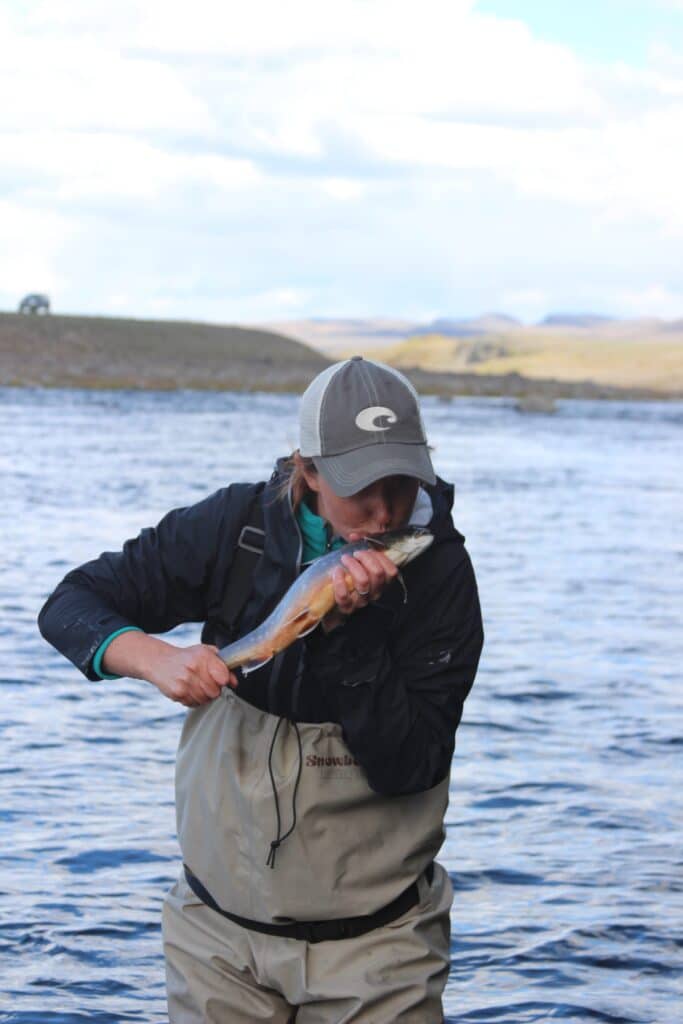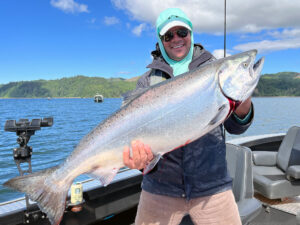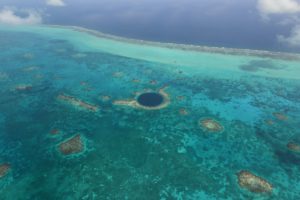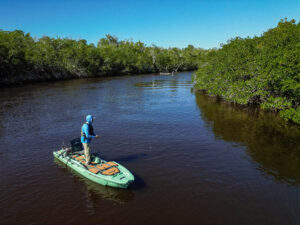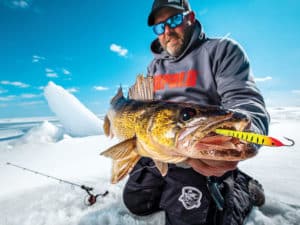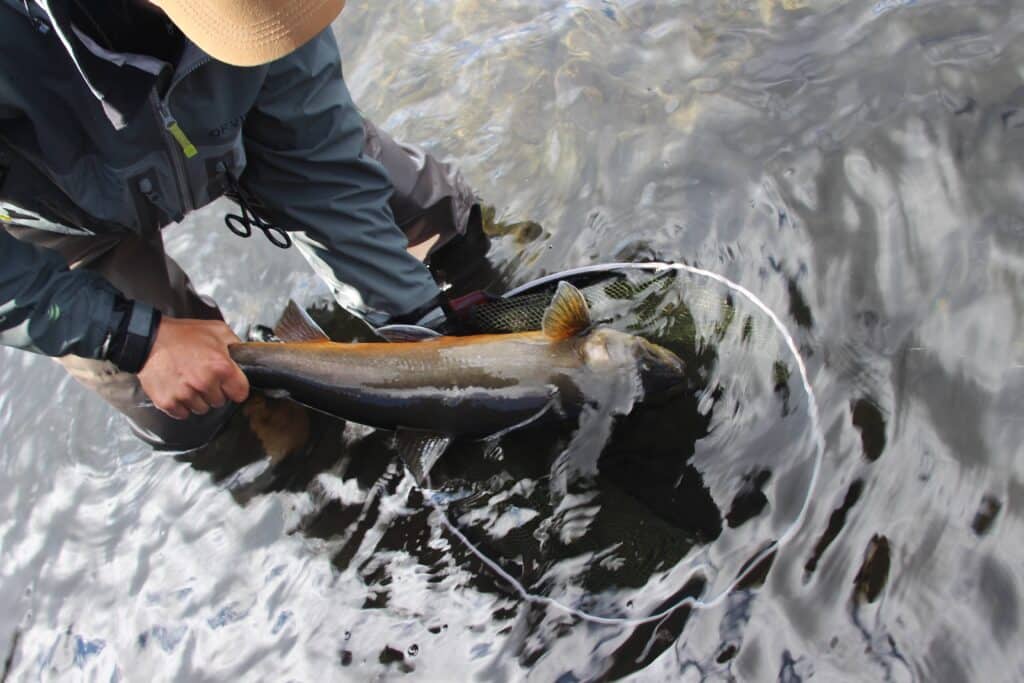
From our vantage atop the columnar basalt cliff I could see dozens of Arctic char finning behind every boulder and in every current seam of the gin-clear waters. Tight to the bluff were plenty of one- to two-pounders, visible every time they darted out from the shade cast by the sheer rock face. Farther out, in the heart of the current, were awe-inspiring piscine forms. As I stared in wonder at the scenario playing out below me, my brain subconsciously pondered Pythagorean theorem to determine casting distance.
A Honeymoon in the Land of Fire and Ice
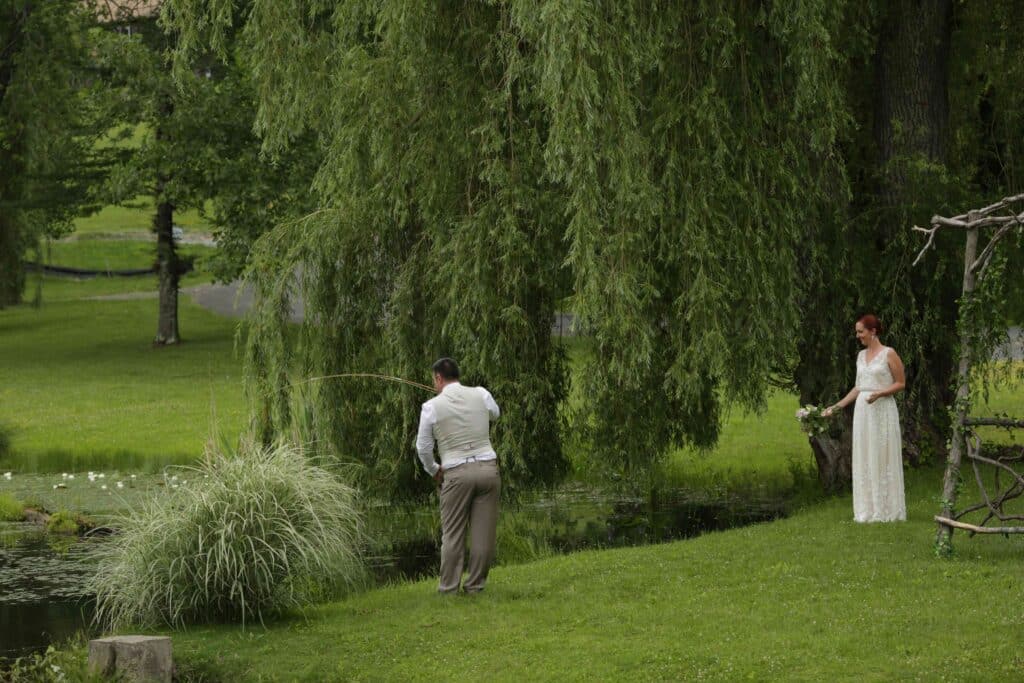
Jeanne is so smart that you might think she created the algorithms that regulate the tides. Her beauty is unmatched, with a smile that manages to stir up the vault inside where I stuff my emotions. Despite all that intelligence, she found herself falling for a man with scarred knuckles and an empty bank account. On June 27, 2015, she made me feel like the luckiest man in the world by taking my hand in marriage. A year later, we’d saved up enough to celebrate by exploring Iceland.
The island nation lies mostly above the 60th parallel, and resembles something the Mars Rover beamed back, but surrounded by puffins and whales instead of the void of space. Alternating forces of glaciers and volcanoes forged the moonscape over eons, with giant ice formations crushing lava fields and rendering volcanic boulders into black sand. Frigid glacial rivers carve their way through the land, some with a braided sinuosity and others with surgical precision. Hot springs serve as a counterpoint, bursting through the crust sporadically. White patches on the horizon denote glaciers, and seem to sprout out of nowhere. Jagged peaks indicate volcanoes; some sleeping and some active.
A Lifelong Pursuit
When you think of fishing in Iceland, your mind probably drifts to salmon and two-handed rods. And you wouldn’t be wrong; the island nation is home to a very healthy population of these silver bullets. Eric Clapton bested a 28-pound beast that took him on a half-mile long tour of the Vatnsdalsá River before succumbing to the Slowhand’s formidable angling skills. But in addition to these chrome beauties, there are Jurassic brown trout and plentiful Arctic char prowling the nation’s sweet waters.
I’ve been enamored with Arctic char since I first saw their gaudy pellage in a faded back issue of National Geographic stuffed in a catacomb of my grandmother’s attic. At one point, a friend and I ventured so far north into inland Maine in pursuit of the last pocket of Arctic char in the Lower 48 that when we could get a station on the radio it was in French. That expedition was based solely on a rumor he overheard at a tying night.
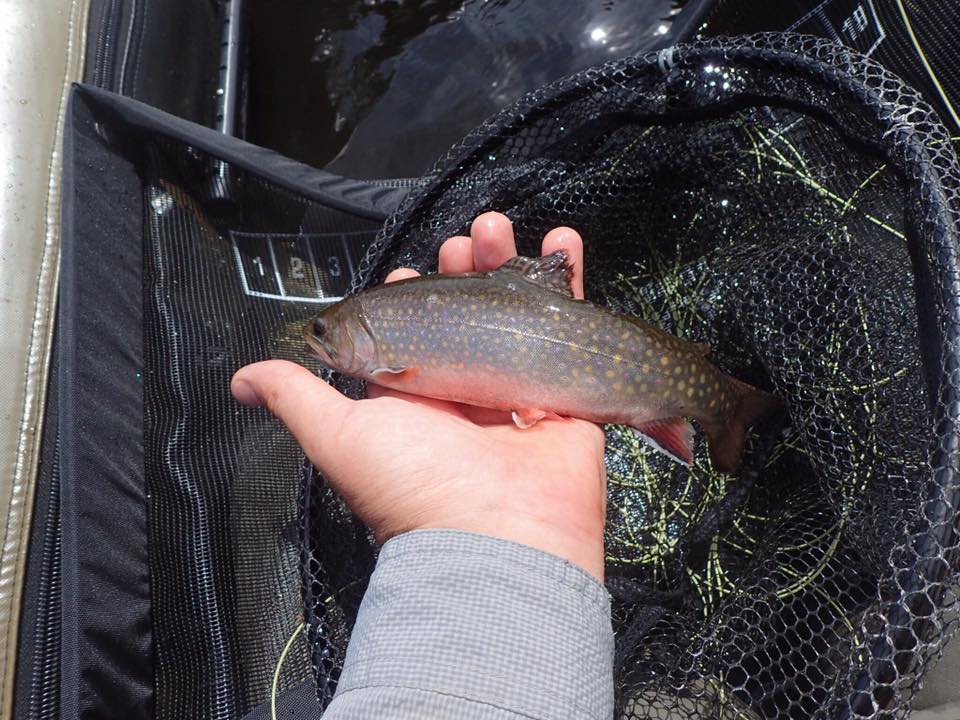
We spent five days plying those remote ponds, dragging streamers as deep as we could get them, and testing the structural integrity of the oarlocks as we battled an incessant northern gale. While we managed some brookies, I didn’t drive 12 hours to the middle of nowhere for fish I have creeks near my house. We failed. Miserably.
So on our honeymoon, I dragged Jeanne along to chase my freshwater white whale. The rivers in Iceland’s Highland region are home to healthy populations of Arctic char. If the scientific literature is to be believed, these are the forefathers of the ones I spent so much time and energy pursuing in the North Maine Woods. The county’s premier char river is the Kaldakvísl, also known as the Cold River. (It seems Icelanders are about as imaginative as New Englanders when it comes to naming things.) By some accounts, the Kaldakvísl is second only to Canada’s Tree River basin worldwide for both numbers and size of the fish.
Cold Water and Plentiful Arctic Char
Staring down at all of the char from the apex of that cliff, Kristjan beamed with the overwhelming pride in his homeland that was so common among his countrymen. Our guide Kristjan Gunnarsson, or Kristjan, son of Gunnar, in the traditional convention, was a 20-something-year-old plucked right from a pile of stock photographs of Nordic youths. The people in Iceland are Vikings. I don’t mean that figuratively —they are the direct descendants of Erik the Red and Leif Erikson. Absent the influences present in mainland Europe, the confusing mash up of letters they call a language has remained much the same since the days of longboats. Any given Icelander can pick up an ancient scroll and read it just as surely as your Aunt Carol peruses the Enquirer. Our guide was no exception.
Iceland doesn’t have the same open access to fisheries that we do in the States. Here, fishing rights are private. Entry to each waterway is strictly controlled, with a limit on the number of rods permitted. Combined with an extremely low population density, this translates to an absence of fishing pressure and exceptionally high success rates. This particular stretch of the Kaldakvísl is controlled by Fish Partner Tours and they treat this resource well, only allowing a handful of rods on it all year. Some sections have only been recently explored.
I had assumed we would be chucking meat, thinking the lack of vegetation would mean a dearth of insects. I was more than slightly surprised when Kristjan revealed a box filled with downsized nymphs, not all that different than what you would find tucked into the average American trout vest. Iceland doesn’t have the entomological assortment that we do, but there are enough bugs in the water to keep the salmonids well fed. Fishable hatches are rare, but happen often enough that everyone has a couple of dries stashed away somewhere. If they are to continue to exist the midges and caddis have to come off at some point, and if you happen to be at the right place at the right time you can luck into fish on top. I’m told that leaving an offering for the elves may improve your chances. Streamers have their place, but they are primarily reserved for the early season.
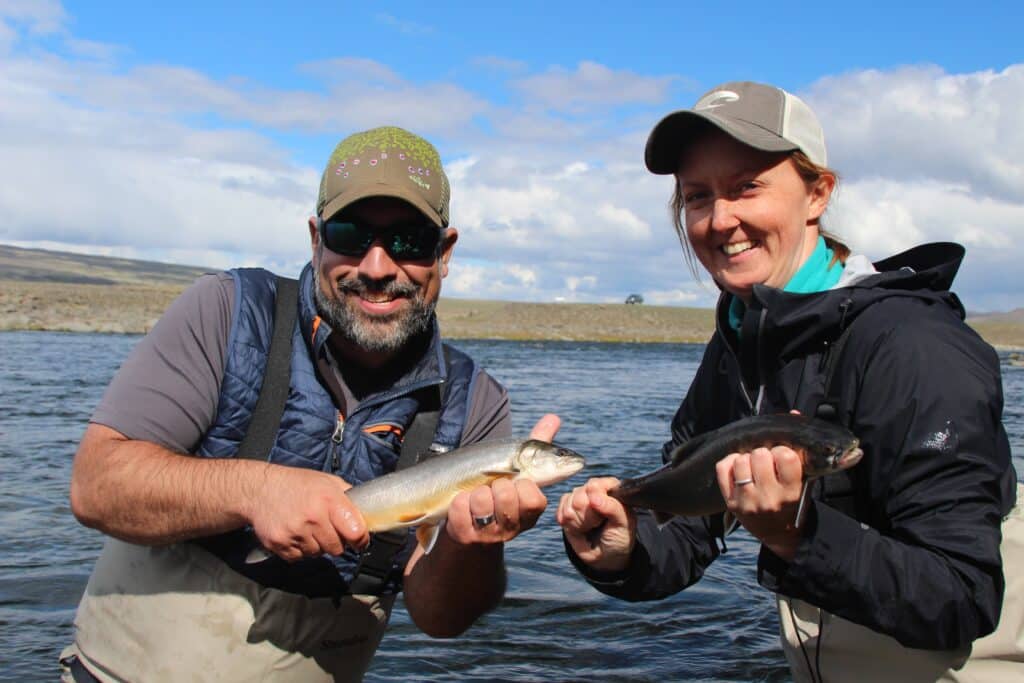
There are two main strategies for fishing these streams: Utilizing a spotter on top of a steep bank to direct casts to holding fish in a spot-and-stalk scheme like they practice in New Zealand, or blind casting to structure like I was more familiar with on our Northeast streams. We opted to blind cast; my wife didn’t want the pressure of being net man on the fish of a lifetime. A two-nymph team and a pinch-on strike indicator was the order of the day. As Kristjan explained, the key to success here were long upstream casts and a drag-free drift. Our proximity to the steep banks and cliff faces often necessitated roll casts. Reaching the middle and executing a few quick mends resulted in a hook up more often than not.
Action was fast and furious, with double-headers a common occurrence. If you hit the faster water in the middle you were rewarded with a larger model in the three- to five-pound range. I lost a few before I got the hang of it. I’m not used to fish of striped bass proportions having the delicate jaw of trout — perhaps it was karma from all the times I’ve yelled “Don’t trout set!” at friends fishing in the salt. The combination of the unbelievable scenery and exceptional angling was almost too much, though I could have fished that river for two weeks straight and never gotten enough. Who doesn’t love large fish on small flies?
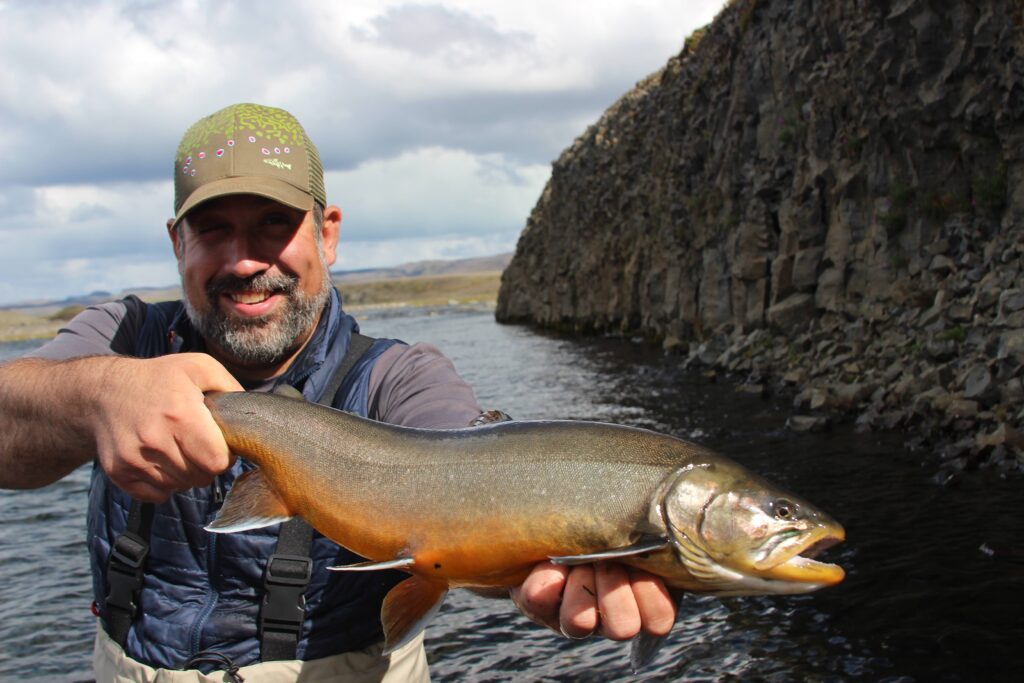
I’ve tangled with some big fish on a fly rod in my day, including a 38-pound striper that took me dangerously close to the bottom of my spool a few times before I beached him. But I don’t think I have ever been prouder of an angling accomplishment than I was when Kristjan slid that net under the two-foot long monster. That gorgeous fish represented the zenith of a journey that started with a dog-eared magazine, detoured to the northernmost reaches of the continental U.S. and ended on an island in the Norwegian Sea.
If You Go
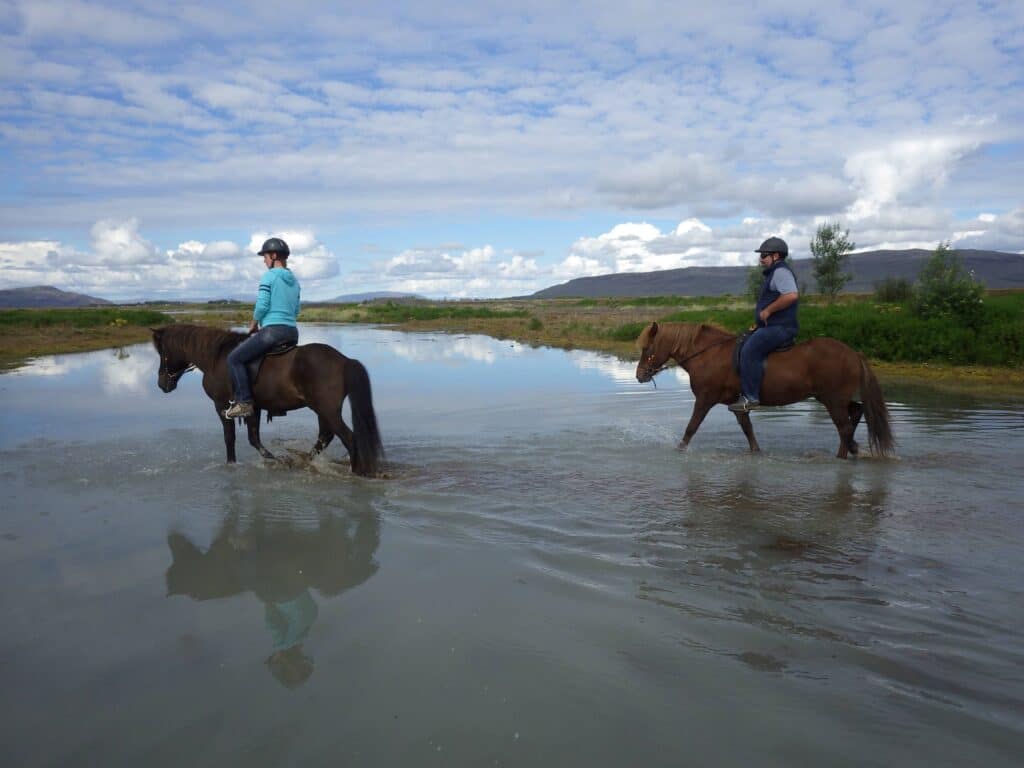
Iceland can be circumnavigated using the aptly named Route 1, a ring road following the country’s perimeter, with the occasional dip toward the interior. Jeanne and I spent 10 days doing just that from the cockpit of a mid-sized SUV, taking in waterfalls and other geologic wonders with the chatter of a diesel engine serving as a soundtrack. To traverse the jagged terrain the locals use a series of vehicles that are as rugged as the landscape. Some are familiar, such as the ubiquitous Land Rover. Others build upon recognizable foundations, seamlessly melding oversized rubber under giant fenders that somehow manage to maintain a factory appearance.
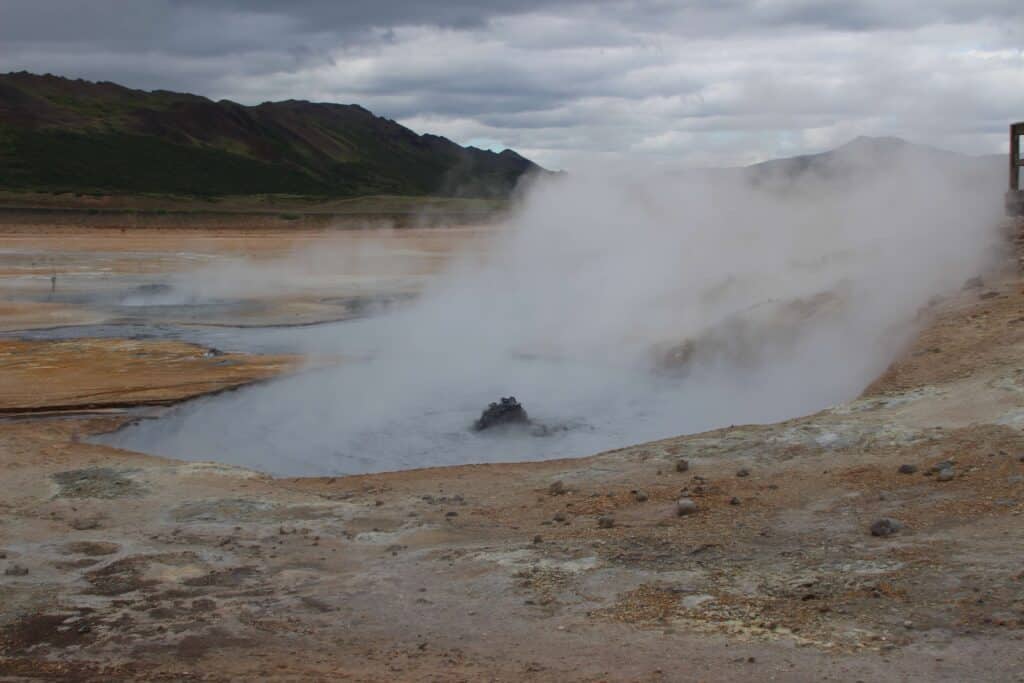
When discussing this geologically-volatile realm, the “Land of Fire and Ice” moniker is appropriate. Relatively new by tectonic standards, the scars of formation are visible everywhere. Surface vents let subterranean gasses escape, the sulfurous odor of hellfire carried away by the coastal breeze. These same underground vapors heat thermal pools, providing natural hot tubs for those that don’t mind the rotten egg stench that accompanies them. I lack an evolved sense of smell, a trait that has served me well working with wildlife, so I was unfazed. Jeanne isn’t similarly “blessed,” but didn’t seem to mind. Some of this geologic activity can be considerably more harmful than foul odors. In April of 2010, Eyjafjallajökull, a volcano located in southwest corner of Iceland, erupted. While damage to property was minimal, the ensuing clouds of ash grounded air travel internationally for six days. Disruptions in commercial aviation were reported through the end of May in parts of Europe. In 2021, the Fagradalsfjall eruption on Reykjanes Peninsula poured molten rock through some nine vents for six months, though there was little damage and tourists flocked to watch the spectacle. Fagradalsfjall awoke again in 2022, but spent less time spewing lava.
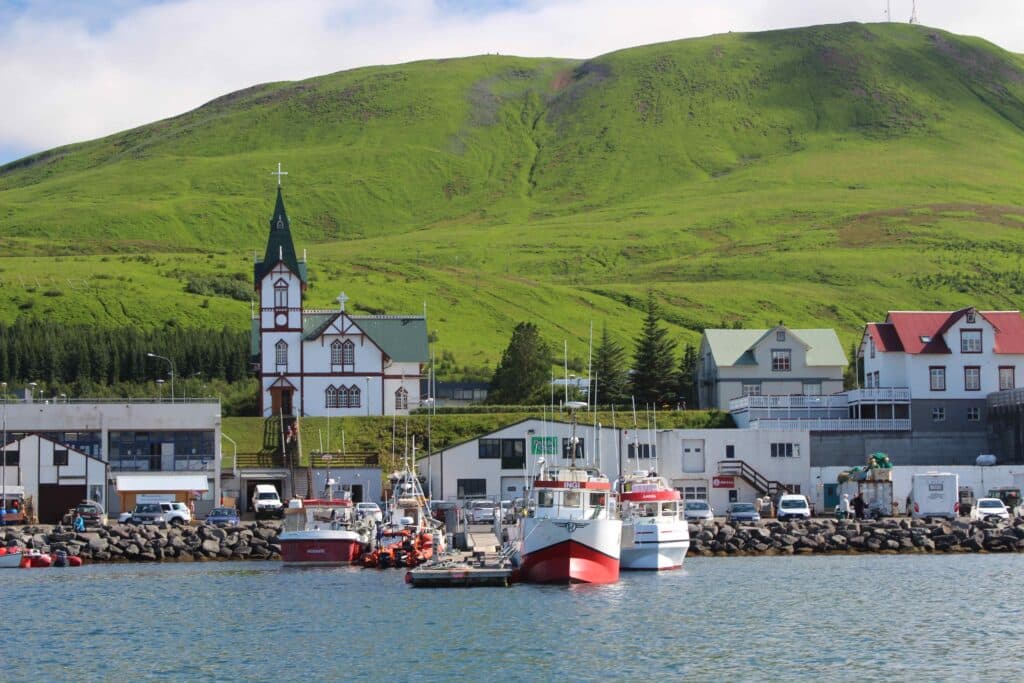
Being isolated from neighboring continents by thousands of miles, Icelanders look to the sea to provide the majority of their sustenance. The fertile grounds just minutes from the ports are home to abundant cod, mackerel, and wolfish in depths measured in feet, not fathoms. Though not politically correct, whales are still harvested for food. Minke steaks are available in supermarkets and restaurants. One of the local delicacies is Kæstur hákar, fermented Greenland shark. Because the shark’s meat is poisonous when fresh due to high levels of urea, it is left to rot, buried in the sand for a few weeks followed by a few months of hanging in an open-air barn. Anthony Bourdain called it “the single worst, most disgusting and terrible tasting thing” he has ever eaten. I found it to be enjoyable, with a taste reminiscent of sharp blue cheese. Jeanne agreed with Anthony’s assessment.
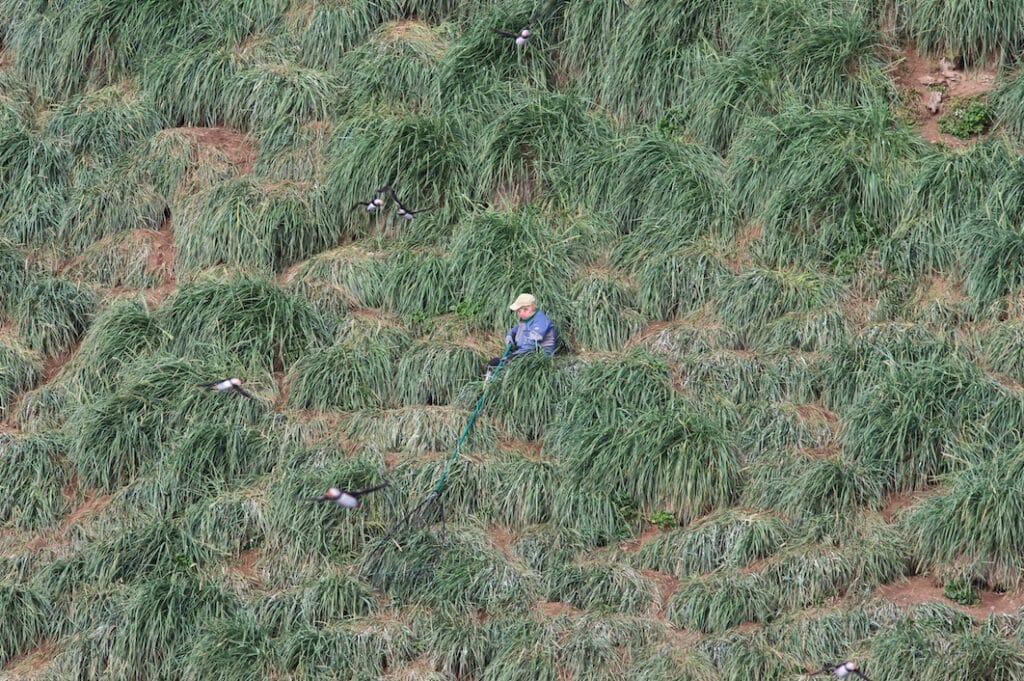
The island is also surrounded by puffins, with some estimates placing the population somewhere between eight and 10 million birds. Half of the world’s puffins nest here, in colonies on smaller islands off the coast. It is primarily during that time that they are harvested for food, being ensnared with traditional long-handed nets known as háfur off of the cliff sides where they incubate their eggs. Locals hunt them with firearms; with rim- and centerfire rifles being preferred by many due to the downy plumage’s ability to repel shot, though sporting expeditions are known to take to sea with fine doubles. A good day’s shooting will produce somewhere in the neighborhood of 50 to 100 birds. Other species of seabirds, such as fulmars, are pursued to a lesser extent. While we can’t speak to the table quality of gulls, Jeanne and I both placed smoked puffin up with the best fowl dishes we have ever had.
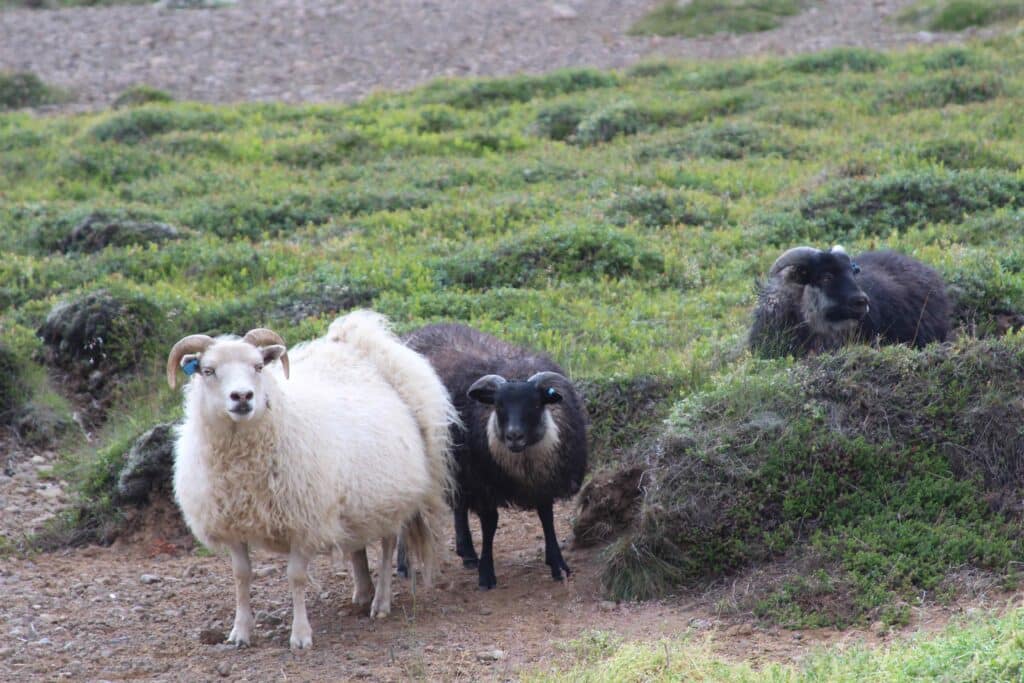
Iceland is also home to approximately 640,000 sheep, which translates to two sheep per person. Their ability to digest the abundant lichen and aptitude for roaming on their own makes them the livestock of choice. Put out to pasture as soon as the snow starts to melt, they are left to their own devices until the fall when the farmers take to the hills on their sturdy Icelandic horses and round them up. They get shorn, and some spend the winter in the barn and the rest go to the butcher’s freezer.
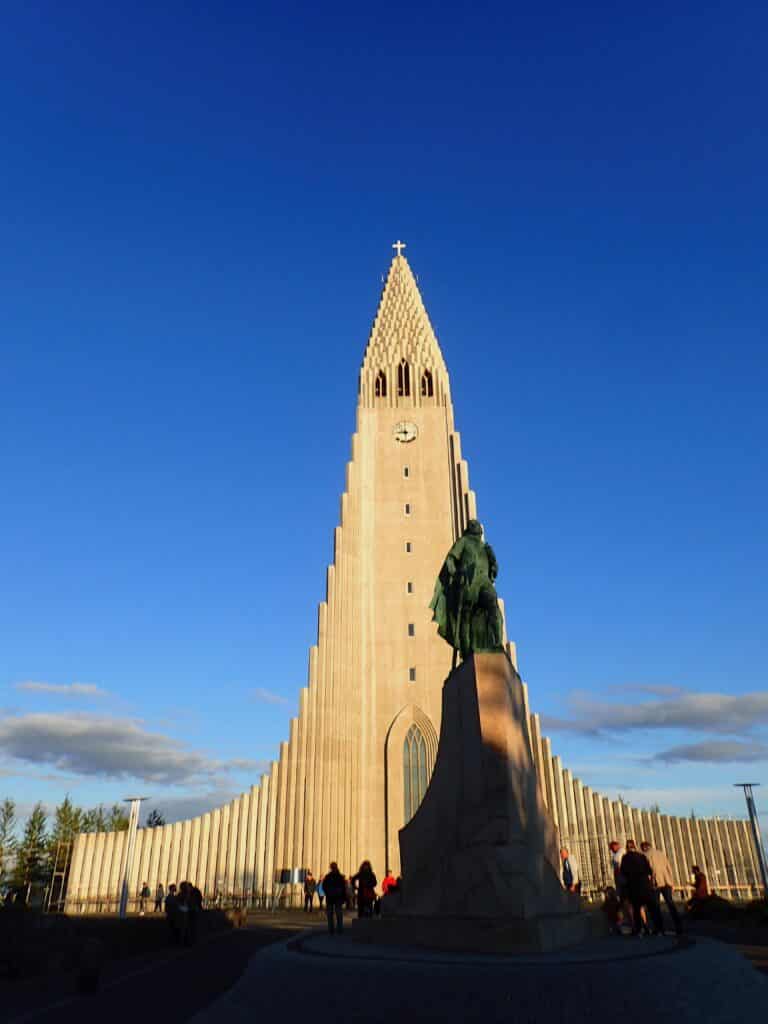
Two-thirds of Iceland’s denizens live in the capital of Reykjavík, a city with an Old World feel and hipster overtones. With all of the residents concentrated, there are plenty of wide-open spaces for fish and game to flourish. The Ramsar Convention on Wetlands of International Importance lists Lake Mývatn as an important waterfowl habitat, home to more species of ducks, 15, than Europe. Greylag, Pink Footed, and Barnacle geese also call the island home. Native mammals are few, but pockets of transplanted European Reindeer exist. Fish are found in every water body, fresh or salt, often in astounding numbers. With all of the natural wonders, Iceland truly is a paradise.
